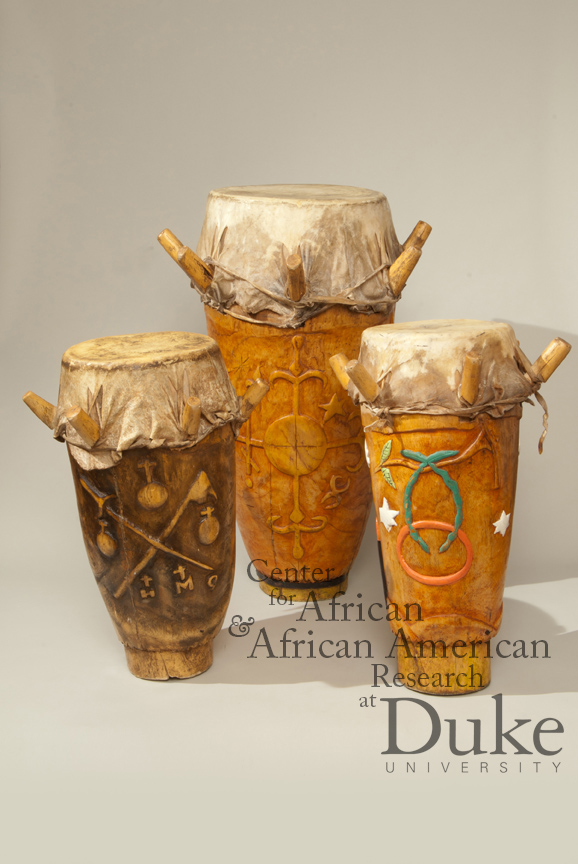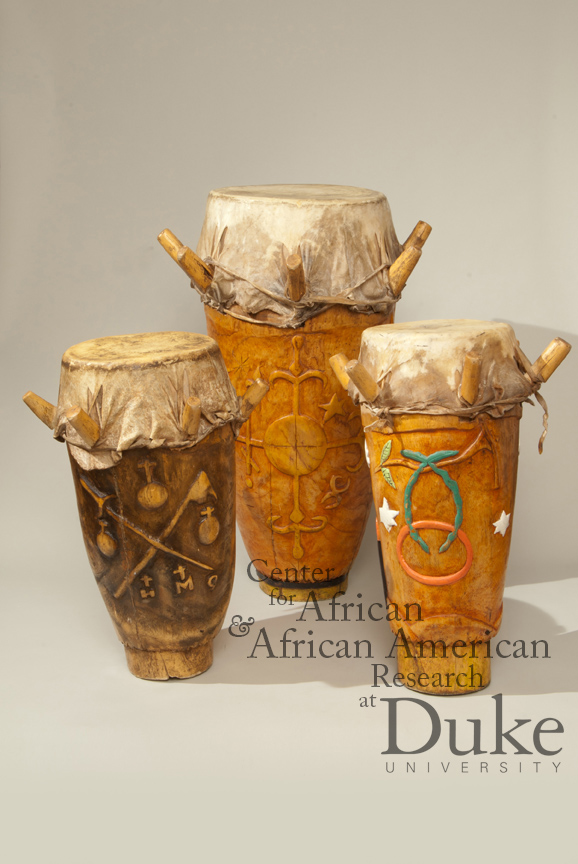





Maman: h-80, d-34.5
Segon: h-61, d-22.9
Boula: h-55.9, d-25.4
(centimeters)
Maman: h-31.5, d-13. 5
Segon: h-24, d-9
Boula: h-22, d-10
(inches)
This drum set is made for the divinties of the Rada nation of Haitian vodou. The set is comprised of the Maman (Kreyòl for mother) which is the tallest and deepest drum, the Segon (Kreyòl for “second”) which is the middle drum; and the Boula which is the smallest drum. The Maman is responsible leading the beat; it is struck by the Bagèt stick on either the head of the drum or its side. The Segon creates the bass and is played with two bare hands. The Boula plays the ostinato pattern and advances the rhythm; it is played with two sticks. The carvings on the side of the drums are known as vèvè which are religious symbols used to call forth the lwa during a ritual. During the ritual, vèvè, usually drawn in cornmeal on the ground represents the lwa. The Maman drum has the vèvè of Papa Legba on one of its sides (see picture 2 in Additional media section). It is difficult to discern which lwa the other vèvè represent.
Contact
Sacred Arts of the Black Atlantic Project, Duke University
Box 90091
Durham, NC 27708
Email
jm217@duke.edu